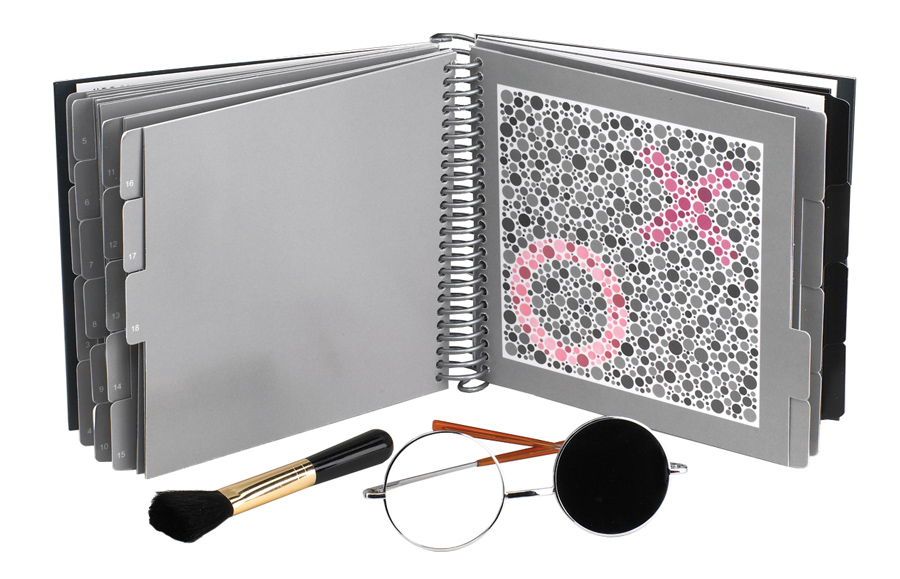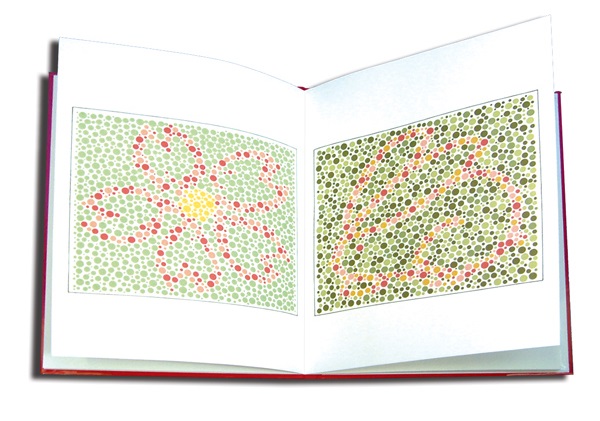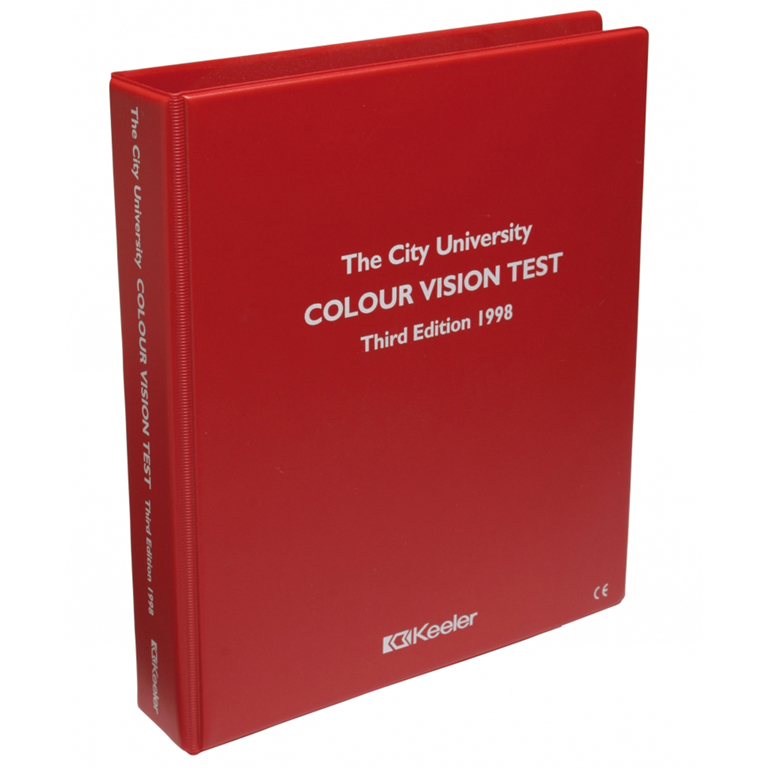Pseudoisochromatic Plates (PIP) Color Blind Test
Contents
- About Pseudoisochromatic Plates (PIP) Color Blind Test
- Advantages and disadvantages of Pseudoisochromatic Plates
- Colorlite online Pseudoisochromatic Plates (PIP)
About Pseudoisochromatic Plates (PIP) Color Blind Test
Pseudoisochromatic plates were first introduced by Stilling (1873). The success of tests of this kind depends on the inability of color blind observers to discriminate between certain colors. A symbol (number, letter, or geometric figure) composed of colored spots is set in a background of differently colored spots. The most frequently encountered design involves colors chosen so that the symbol is not seen by the color blind observer (pseudo-isochromatic, falsely appearing of the same color). There are many modern variants of this kind of test.

There are many types of pseudoisochromatic tests (e.g., American Optical Hardy-Rand-Rittler, Ishihara, Dvorine, Tokyo Medical College). All provide efficient screening (90 to 95%) of congenital red-green defects. These tests consist of a series of cards on which colored dots of discs of various sizes are printed to form a multicolored figure against a multicolored background. The figure is some easily identifiable letter, arabic numeral, or geometric configuration (e.g., a circle, triangle, or cross). The only systematic difference between the figure and background dots is in color: the figure is composed of dots of one or more colors, and the background is composed of dots of different color or colors. Variations in the size, lightness, and saturation of the dots may be employed so that identification of the intended figure by cues other than hue is less likely. Observers with normal color vision can detect the hue difference between figure and background and consequently can easily read the figures, but observers with color blindness may fail to distinguish between figure and background colors and hence fail to read the figures. In this sense the colors of the plates appear isochromatic only to the color blind observer.

Hardy, Rand, and Rittler (1945) characterized four types of pseudoisochromatic design: the vanishing design, the qualitatively diagnostic plate, the transformation plate, and the hidden defect design. The vanishing design contains a figure that is easily read by the normal trichromat but not by the color blind observer. The qualitatively diagnostic plate is a vanishing plate that permits the differentiation of a protan from a deutan observer. In the transformation plate, two figures are embedded in the background: one figure with the appropriate color and lightness contrast to be read by the normal trichromat, and the other with the appropriate color and lightness contrast to be read by the color blindness. In the hidden digit design, the plate is a vanishing plate for normal trichromats, but the figure is seen by the color blind observer.

The City University Test was designed to detect color confusions (i.e., colors that appear quite different to the normal observer but appear similar to the color blind observer), and the Sloan Achromatopsia Test was designed to detect achromatopsia (i.e., the inability to differentiate any of the rainbow hues or their intermediaries other than on the basis of lightness).
Advantages and disadvantages of Pseudoisochromatic Plates
There are certain advantages in the use of plate tests. They are rapidly and easily administered by inexperienced personnel; they are readily available; they are relatively inexpensive; and they can be used on naive subjects, illiterates, and children. There are, however, certain disadvantages. First, the spectral quality of the light source illuminating the plates affects the reading of the figures; the plates must be exhibited under the standard viewing conditions for which they were designed. Second, the success of the plates depends mainly on the careful selection of confusion colors. Often, for technical reasons, the best confusion colors for diagnostic purposes are not available. Third, even when a set of colors is chosen, individual variation in the eye lens and in coloration of the back of the eye means that a single choice of colors will not be optimal for all observers. Finally, no accurate scoring criteria for classifying color blindness on the basis of test performance are available; the number of errors on pseudoisochromatic tests tells us little about the type or extent of a color blindness. Pseudoisochromatic tests should be used primarily as screening tests to divide people into normal and color blind populations; their diagnostic value is limited. Caution should be used in extracting more detailed information about color discrimination from them.
Colorlite online Pseudoisochromatic Plates (PIP)
The history of Colorlite PIP test dates back to 25 years. At that time, Technology University of Budapest had started color vision research. PIP test was developed then and it was one of the first computer-controlled PIP tests in the word. The test was developed on CRT monitors, but they later, it was redesigned an online version. It works reliably on most displays with some screen calibration. The test consists of 9 colored (PIP) plates and contains a circle of dots appearing randomized in color and size. Within the pattern are dots, which form a number, difficult to see with a red-green color blindness. The test is not suitable for distinguishing between protan and deutan type of color blindness, but is very effective in detecting red-green color vision deficiency.














































